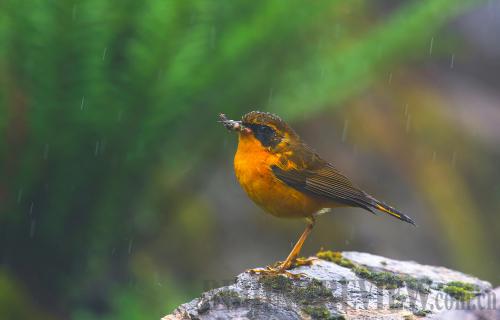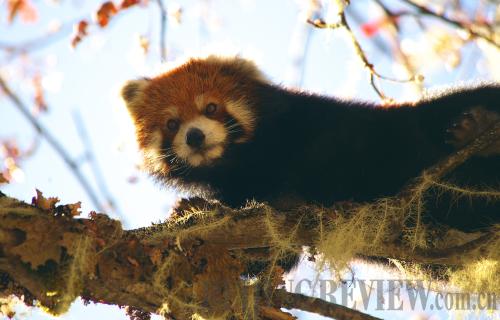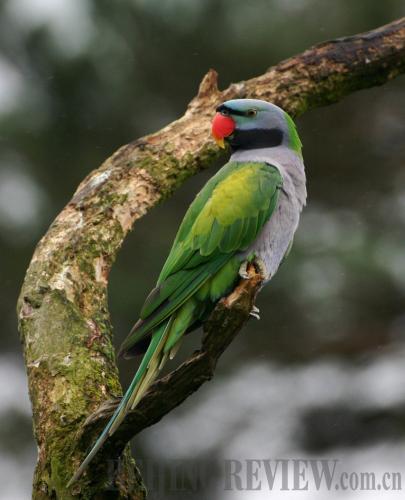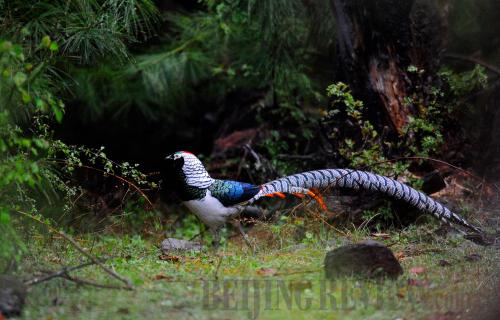|
 |
|
The Meili Snow Mountain, the highest mountain in southwest China's Yunnan Province, boasts numerous snow-clad ridges and peaks and is rich in biodiversity (CFP) |
Imaging biodiversity surveys are currently gaining popularity in China. A group of innovative Chinese photographers are dedicated to recording biodiversity with pictures and videos. They conduct biodiversity investigations, assessments and monitoring through vivid images instead of dull scientific reports, making it easier to communicate to the general public the importance of nature conservation.
"We are not scientists, but a group of people with a strong interest in biology and with a good mastery of photography," said Peng Jiansheng with a modest smile, while sharing his experience of imaging biodiversity in the Meili Snow Mountain, southwest China's Yunnan Province, at a salon in Beijing on January 8.
Peng is a senior photographer from Imaging Biodiversity Expedition Institute (IBE), a Beijing-based social enterprise engaged in imaging biodiversity surveys and nature conservation-related products.
The Meili survey, sponsored by the Nature Conservancy (TNC), the Administrative Bureau of Meili Snow Mountain National Park and the Euro-China Biodiversity Programme, produced numerous pictures of many species, including birds, beasts and plants.
Based on the results, the Chinese National Geography Press published the Field Guide to the Wildlife of Meili Snow Mountain National Park in April 2011. It was China's first nature observation manual in three languages: Chinese, English and Tibetan.
 |
|
Golden Bush-robin (GUO LIANG/IBE) |
"Of all 20 surveys we conducted, the one to the Meili Snow Mountain was the most fruitful," said Guo Liang, another IBE bio-photographer who worked on the same project.
Due to the unique geological and climate conditions, the snow-capped mountain is rich in biodiversity. In order to get a complete survey, IBE went to the mountain four times in each of the four seasons between 2009 and 2010.
"We conducted the survey in the area from 2,700-meter altitude to 4,200-meter altitude in the mountain, which is covered with dense primeval forests, lakes and high mountain meadows," said Peng.
 |
|
A baby Red Panda (GUO LIANG/IBE) |
Despite the tremendous natural beauty, the work was rather difficult.
"The biggest difficulty is how to find the wildlife and we have to be very patient looking for and waiting for them," he said.
"When I took the picture of the Lady Amherst's Pheasant, it rained for a whole night. It was freezing cold on the mountain. We almost despaired and then it came," said Peng, his eyes shining. "We hid in a tent with windows in four directions to take the picture."
To take pictures of rare animals, the survey team often looks for them through analyzing their feces, feathers and trails. The hiding tent is one of the most frequently used techniques. They often went into the tent at dawn and hid in it until dark, waiting for animals to pass by.
"If we were lucky, we could take pictures of several animals a day. But when we were not lucky, not a single animal would come near for a whole day," said Peng.
 |
|
Derbyan Parakeet (FILE) |
"To take this picture, we spent quite some time and energy," he said, pointing to a picture of a Derbyan Parakeet on the screen.
In the picture is an amazingly big group of Derbyan Parakeets flying in the blue sky. Due to the damage of its habitat, the number of this beautiful bird has declined sharply in China. Such a big group is rarely seen now.
"The bird loves eating pine nuts, so we hid in the pinewood waiting for them. But they are very smart. While the bird flock eats pine nuts in the wood, they leave two guards in the air. Once any danger emerges, the guards will immediately sound the alarm and the flock will fly away like a cloud," said Peng.
 |
|
Lady Amherst's Pheasant (GUO LIANG/IBE) |
Sometimes, unexpected joys can emerge. Once on the mountain, the team was on the way to look for black bear and sambar. But when they got to the destination, they found the pool had already dried up, which meant none of those animals would come. However, on their way back, they came across two red pandas, extremely rare animals.
| 